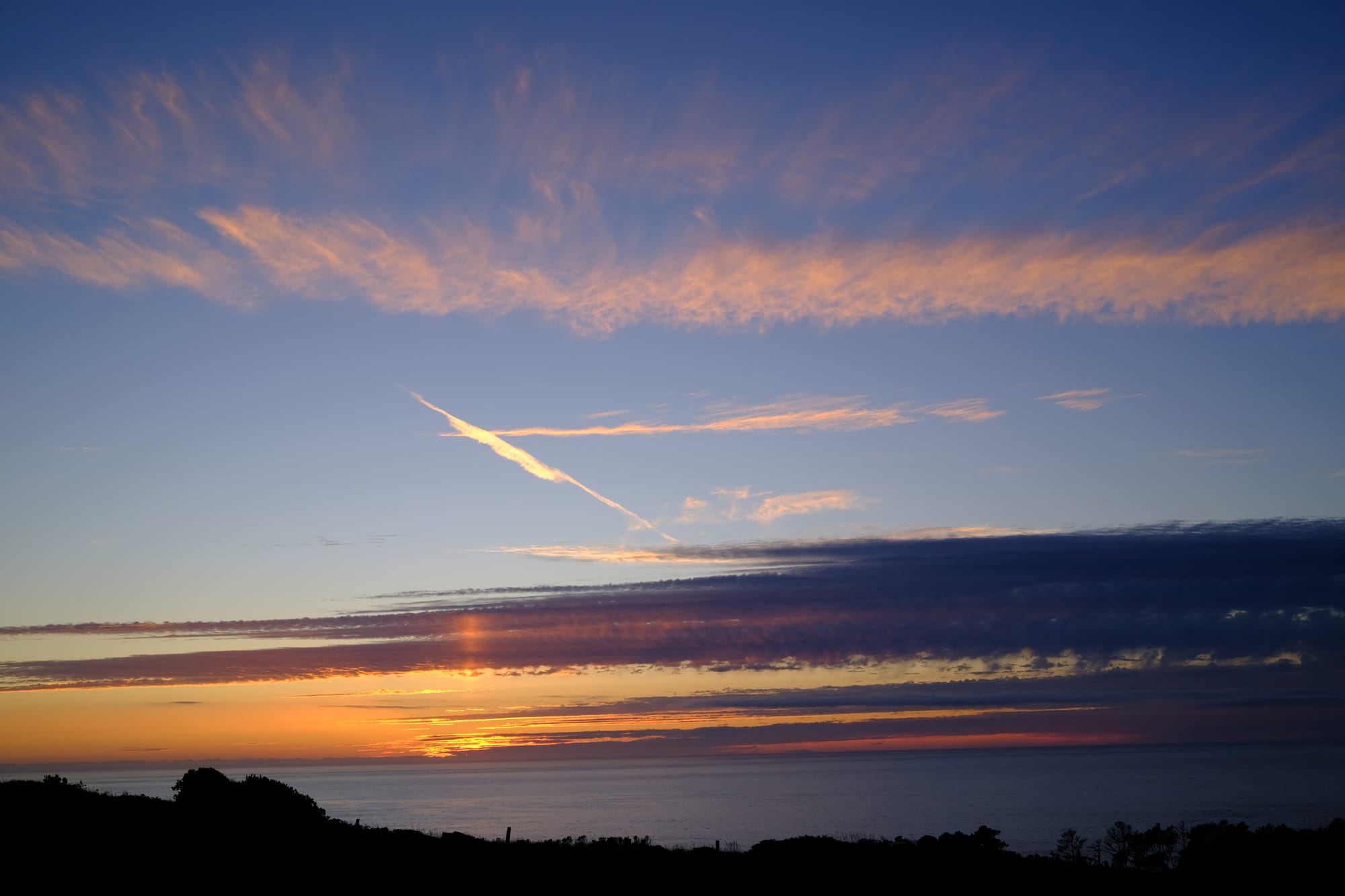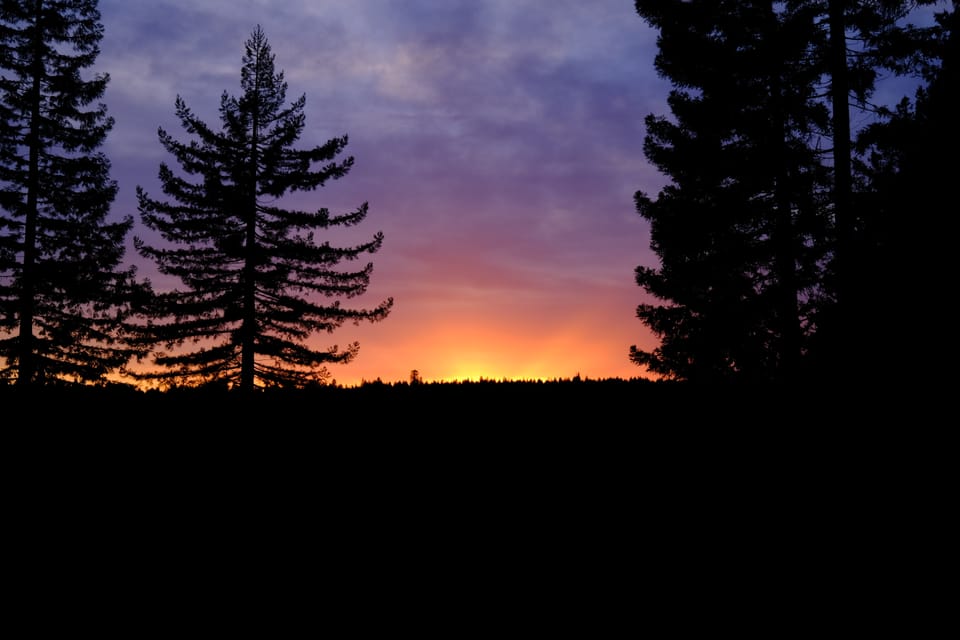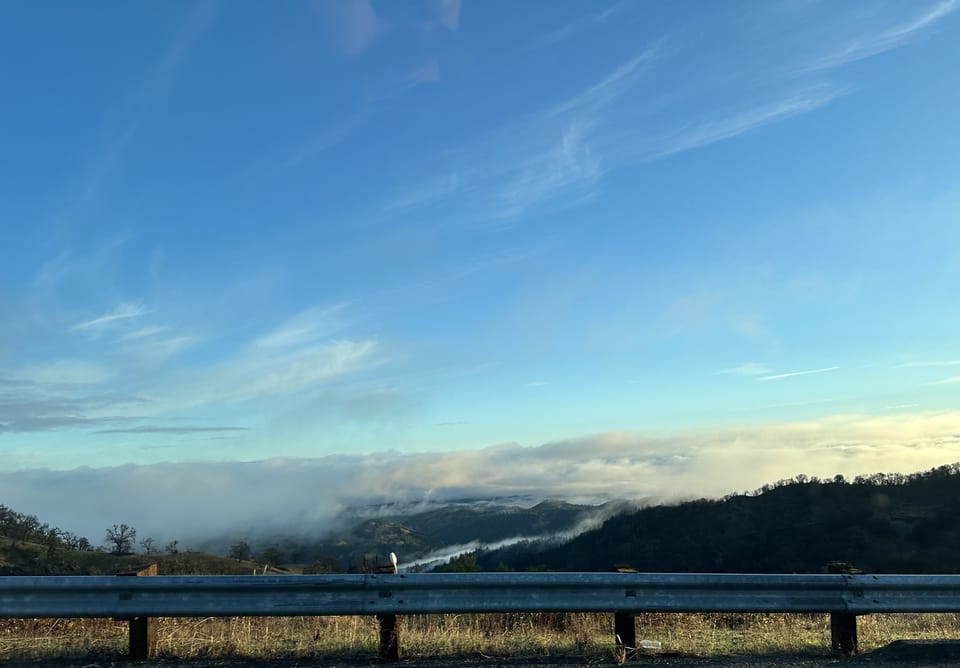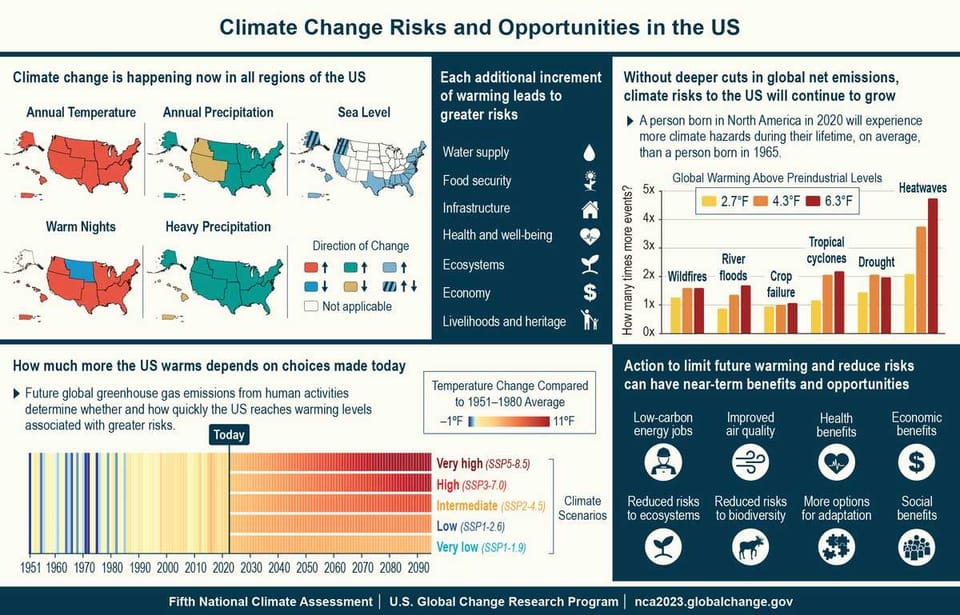Fresh post, who dis?
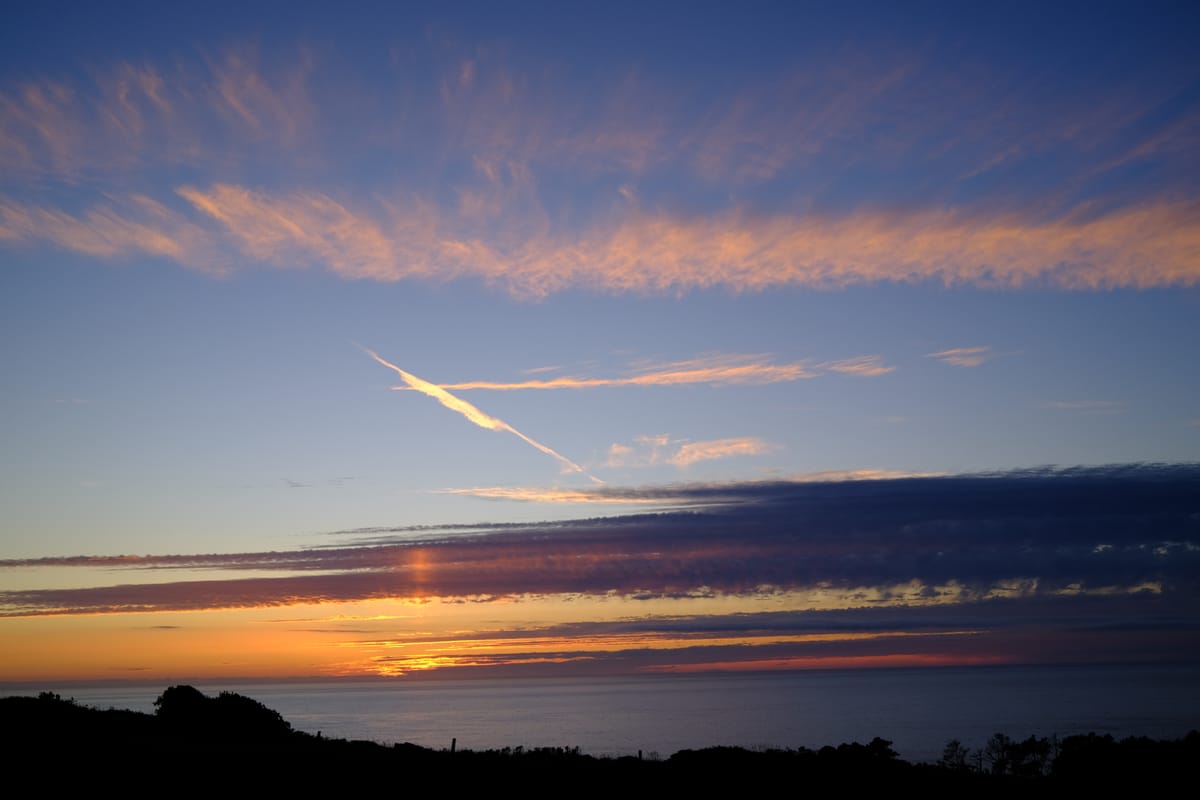
Yes, we're back. I hope this message finds you well!

We're going to ease into this and just cover some current state things in this post. I myself haven't been keeping tabs on many of the things I used to so it'll be a good exercise.
If you read just one thing
Don't even read my post, go read this one. In short, NOAA and the NWS saw cuts a while ago and it sucked. Yes they've been hiring people back but from my point of view, the cuts shouldn't have happened in the first place. The post I linked above touches on what happened, where things are now, and what the recent budget issues could mean for the NWS.
Happy fall 🍁
Whether meteorological or astronomical, it's fall now!
There are two main ways to define the start of autumn: meteorological and astronomical. Meteorological autumn begins on 1 September and ends on 30 November. This fixed date system is used by meteorologists to ensure consistency in seasonal statistics and forecasting.
Astronomical autumn, on the other hand, is determined by the Earth’s orbit around the Sun and its axial tilt. It begins with the autumn equinox, which typically falls on 22 or 23 September. During the equinox, the Sun shines directly on the equator, resulting in nearly equal day and night lengths across the globe. In 2025, astronomical autumn will begin on Monday, 22 September and end on Sunday, 21 December.
Source
Fall is my favorite season. Michigan in fall is beautiful and I freaking love apple cider, which you can find in abundance this time of year. I had some cider today actually!
Seasonal outlooks
As usual, you gotta take these with a grain or two of salt but I like to check them out anyway.

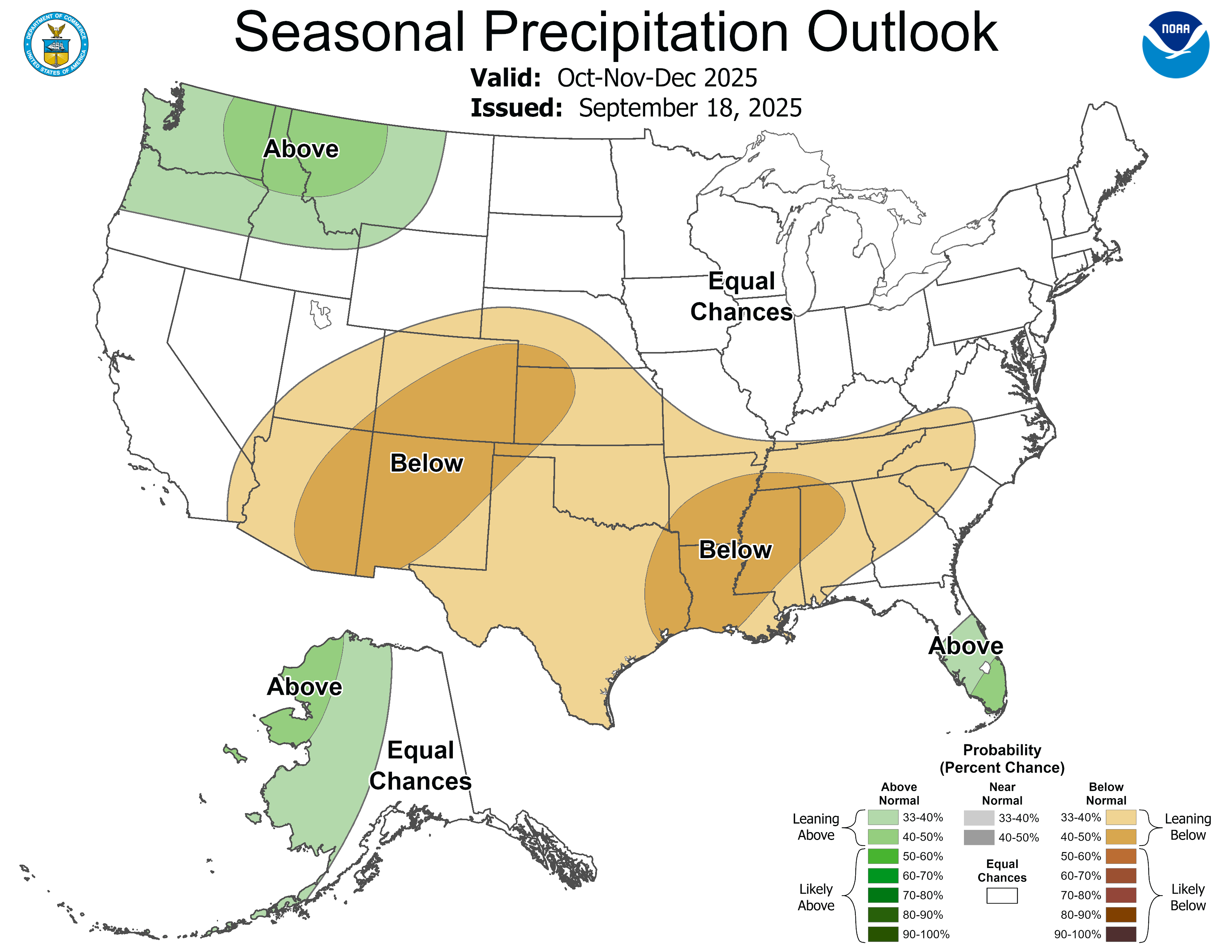
Seasonal outlooks for temperature and precipitation. Source.
While this isn't really a hot take, I'm not surprised to see equal chances of being above or below average rainfall for California this winter because...
El Niño or La Niña?
The last ENSO blog is from June. It still has good info but the Climate Prediction Center discussion from earlier this month has us on a La Niña watch:
El Niño or La Niña Watch: Issued when conditions are favorable for the development of El Niño or La Niña conditions within the next six months.
Source
We've been in a neutral state for a while but things look like they're leaning towards La Niña. For those of you in California, please remember that even if we enter La Niña before or during this winter, it doesn't necessarily mean we're not going to get any rain. It's more a probability thing than a sure thing. La Niña winters can still be wet, and El Niño winters can still be dry.
While we're thinking about rainfall...
It's a good time to check on the most recent drought monitor.
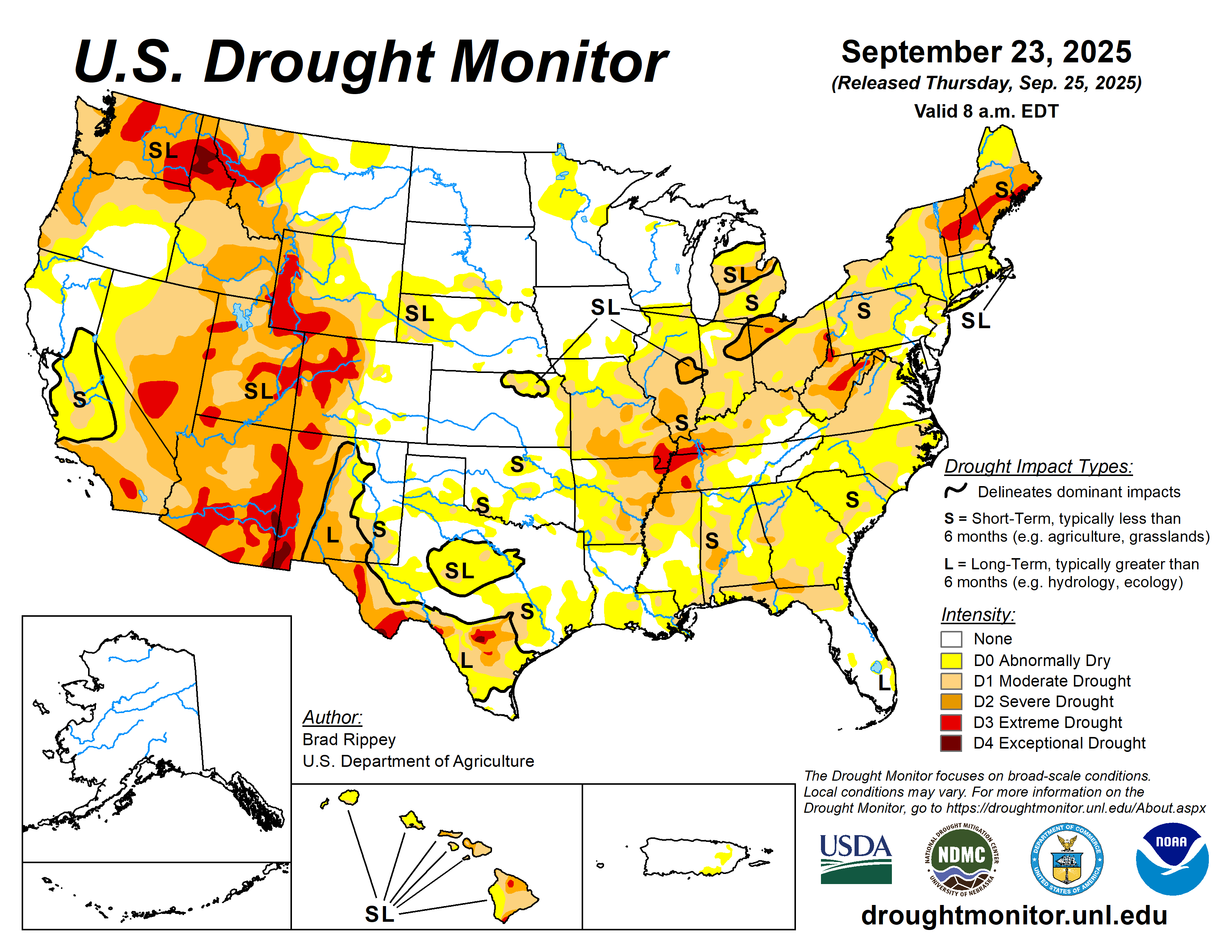
Checking in on hurricane season
I'm no pro but hurricane season (in the Atlantic) this year seems quieter? I say that more just because I haven't heard as much as I feel like I have the last season or two. So let's take a little look at this table from the National Hurricane Center.
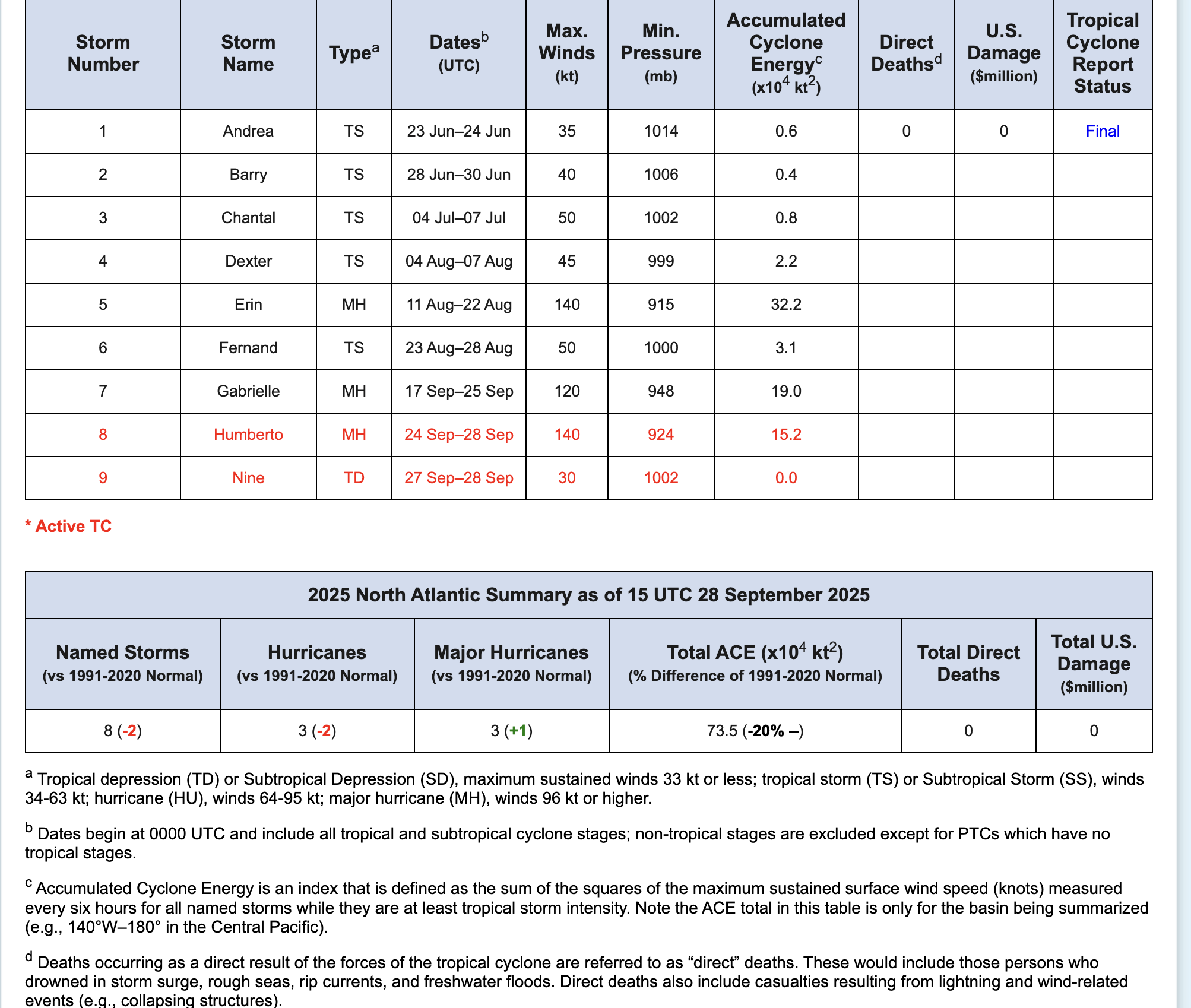
So we have our list of storms and hurricanes, which you can see are below the 1991-2020 normal, but what I want to mention is that accumulated cyclone energy (ACE) number. The definition is a little small in the screenshot so here you go:
Accumulated Cyclone Energy is an index that is defined as the sum of the squares of the maximum sustained surface wind speed (knots) measured every six hours for all named storms while they are at least tropical storm intensity. Note the ACE total in this table is only for the basin being summarized (e.g., 140°W–180° in the Central Pacific).
Tropical storm Imelda and hurricane Humberto are out in the Atlantic now though so not all is quiet. Spoiler: there's some satellite imagery of them later in this post.
From the NWS glossary
This week we chose the letter P, which stands for:
Pingo
A large frost mound of more than one-year duration.
Source
I guess if you haven't been around for more than a year you're just a regular frost mound.
Some satellite imagery
Because we can, and because a little perspective can go a long way.

The usuals
We covered seasonal outlooks but here's some shorter term stuff.
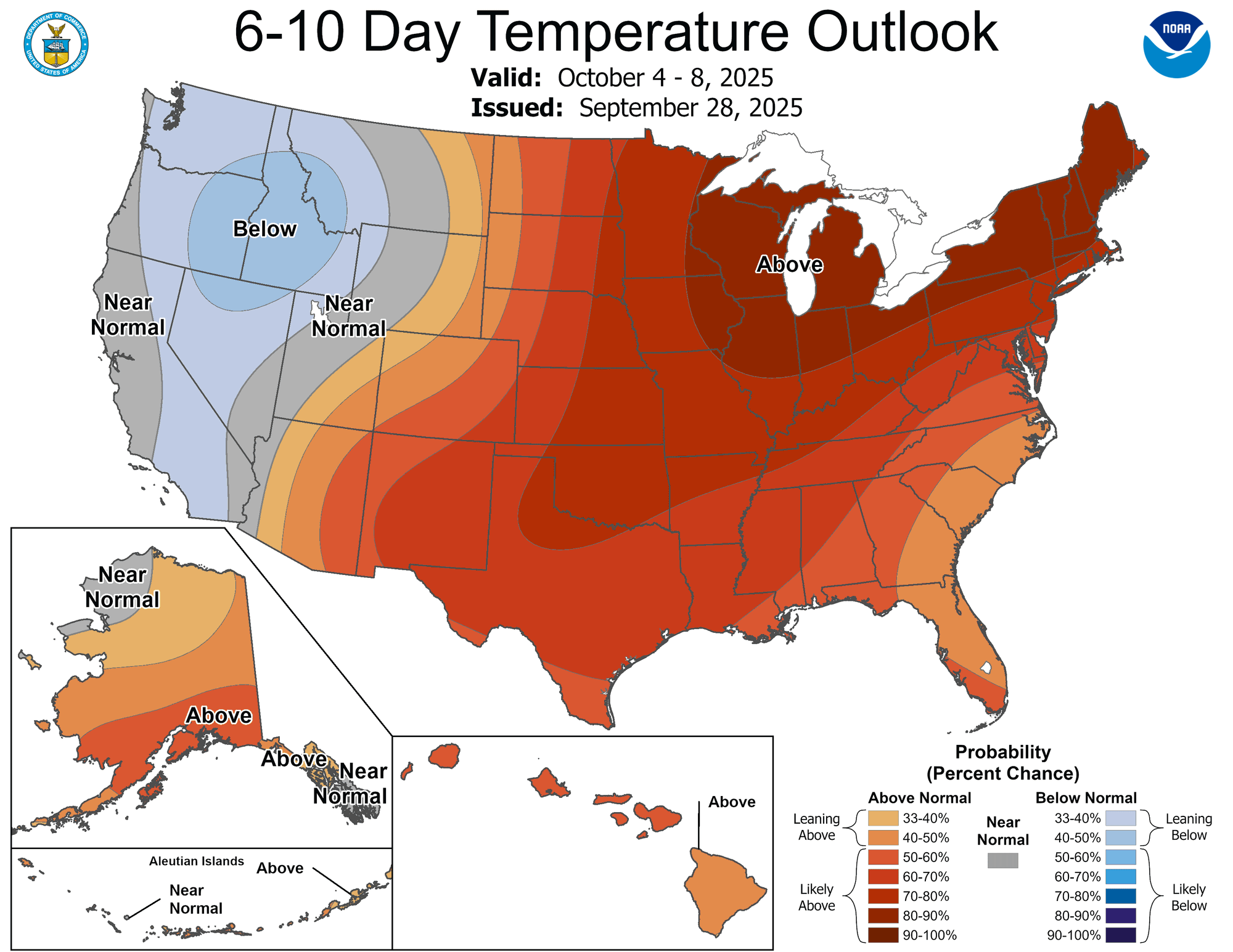
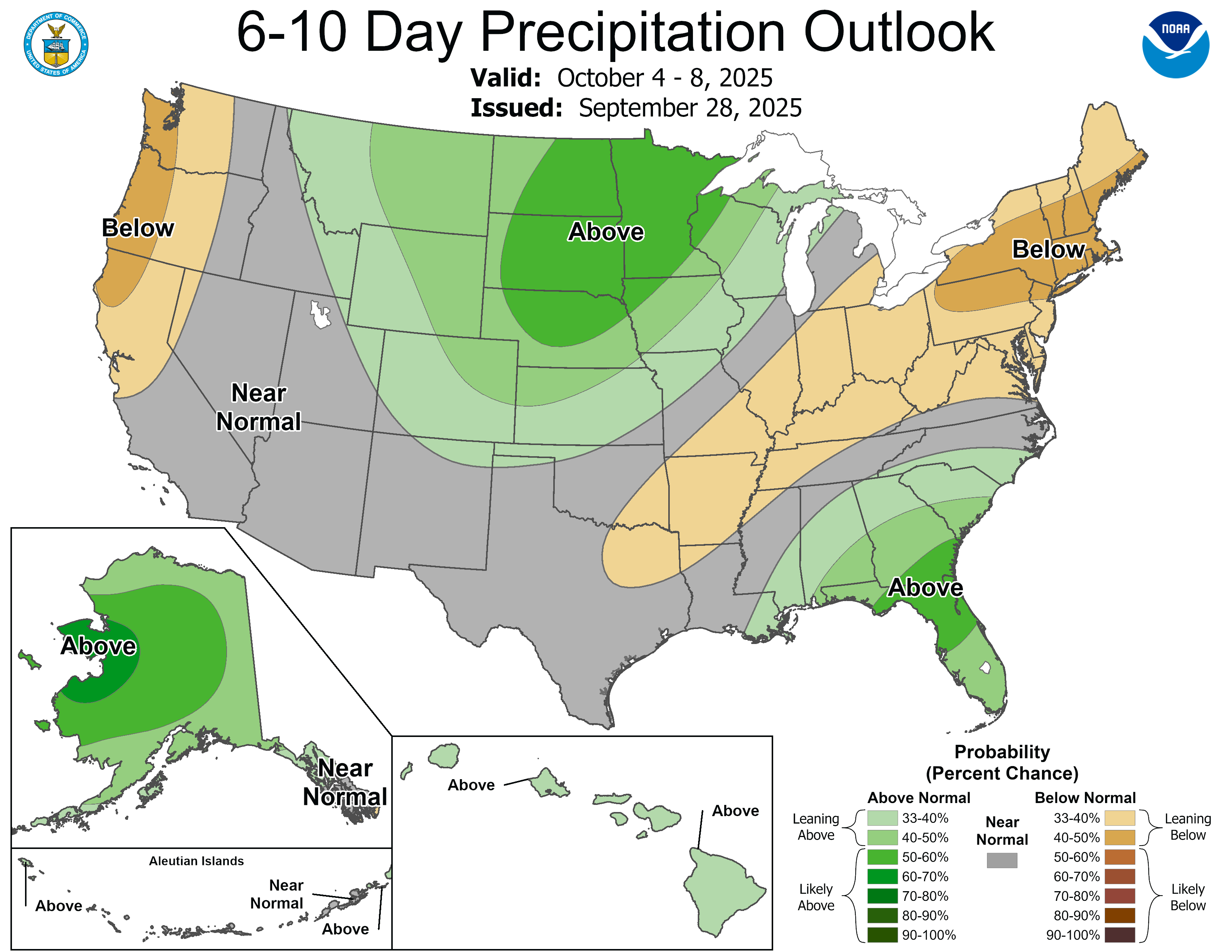
6-10 day outlooks for temperature and precipitation. Source.
That’s it for now
I think we're gonna call it there for now weather fam. See you next time.
